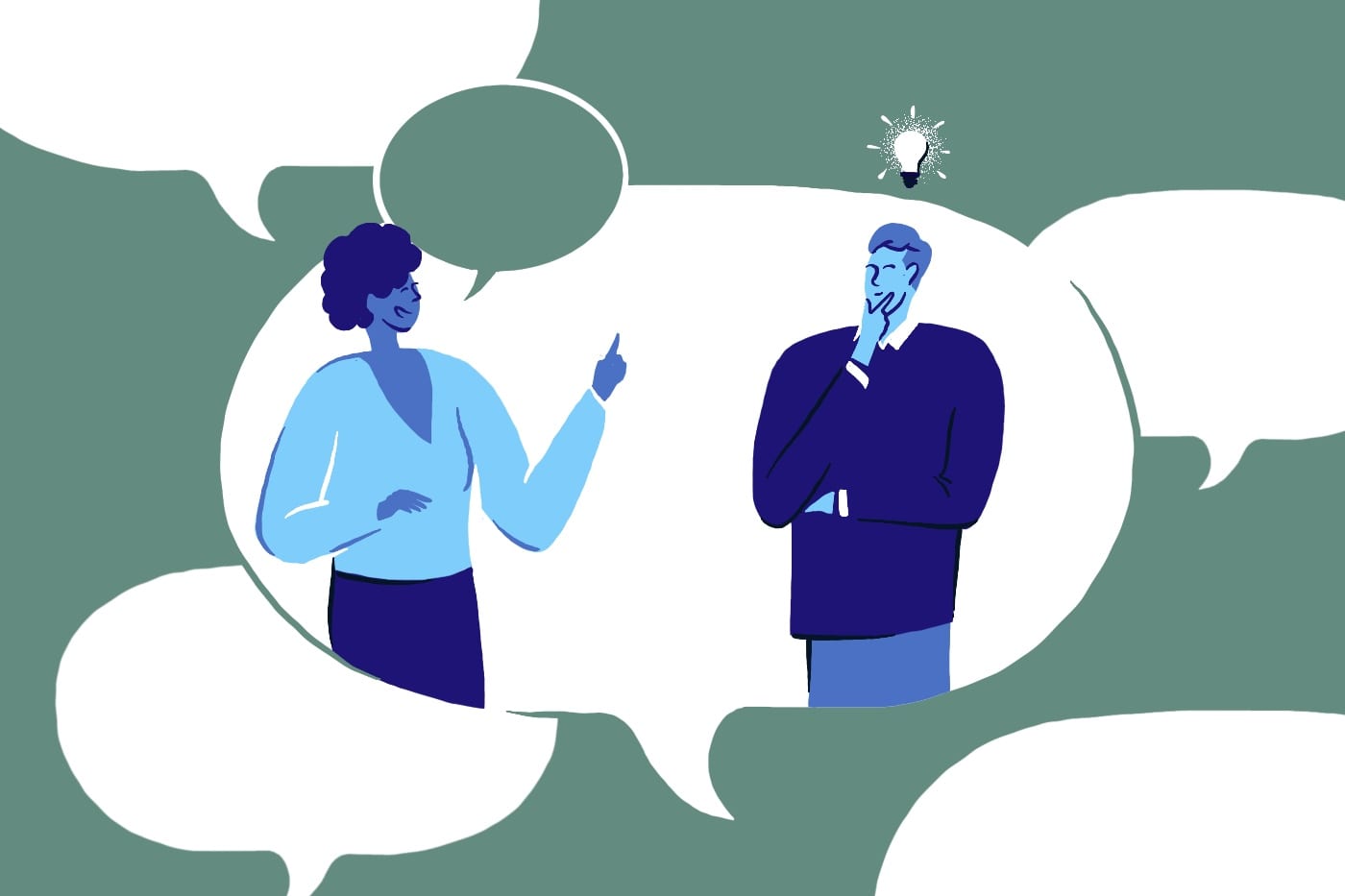5 Coaching Skills That Enhance Your Clients’ Experience
Communication is hard. It’s a wonder we get anything done when you consider how many ways it can break down. The good news is that we can learn skills that help us improve communication and deepen partnerships.
Recently, I took a coaching course from the Co-Active Training Institute (CTI) in which we learned how to guide people through a series of questions to uncover and arrive at their own true insights. While we typically think of coaching as a relationship between a coach and coachee, many of the skills used in a coaching relationship can help build stronger client/agency relationships, too. After all: communication is the key to any good relationship, and a great client relationship helps us produce great work.
Below are five key skills that anyone at your agency can use to elevate your client’s experience.

1. Articulating What’s Going On (AWGO)
This is defined as voicing what we hear, see, experience, or sense is happening — it can be incredibly valuable for anyone communicating with the client. A designer sharing a deliverable who notices some hesitancy from the client can say, “I sense you may not be loving this and that’s totally okay. Let’s talk about what you’re not sure of or don’t like.” An account manager in a client meeting who senses tension can say, “It feels like we’re disagreeing but I hear us saying similar things.”
By articulating what’s going on (AWGO), you are facilitating open communication and transparency at that moment, and also making sure there isn’t any misunderstanding down the line. The result is the foundation for a collaborative, open relationship with the client that inspires trust and confidence down the line.
2. Asking permission
Described as asking the client to empower the relationship by granting access to uncomfortable areas of focus, this skill has the potential to open lines of communication and deepen the relationship. This can also be coupled with AWGO as a way to ask your client if you can offer an observation about a pattern you’re experiencing. For example, an account manager can say, “I remember you voiced similar feedback last time. Can I offer an observation that I think may help move us forward?”
Not every client is going to want to go there and your intuition will play a part in whether you test these waters. Keep in mind that literally asking for permission can go a long way in opening someone up to hearing what you have to share.
3. Bottom-lining
This is one I need to work on myself. Get to the point, then stop talking so your clients can share what they think. An added benefit to the practice of brevity is the thoughtfulness that comes with fewer words. Many of us tend to belabor our points by unnecessarily restating things in different ways, adding color that doesn’t add value. This can lead our clients to feel like we’re trying to persuade them, rather than sharing information with an open mind.
4. Powerful questions
These are questions that move a client towards action and are characterized as being concise and open-ended. Another trademark of a powerful question is that it generally begins with ‘what’ or ‘how.’
This is a natural skill for a strategist who is used to asking, “What are your goals?” But anyone can ask a client a powerful question that evokes thought, clarity, discovery, or insight. For example, a content strategist can ask, “What is the most important point you want to communicate on your homepage?” A designer could ask, “What do you want to achieve on this page of your website?” Bottom-lining with a powerful question is a way to maximize the potency.
5. Reframing
Defined as providing the client with a different perspective, this skill could be useful in redirecting the energy. Depending on the circumstance, it may be easier to provide a new perspective by the way of a question. For example, “What if we shift our focus to how your customer would experience this?” Sometimes we become stymied on a decision and the invitation to alter our perspective offers a break. It’s also possible that the reframe will provide the clarity your client needs to confidently make a decision.
Maybe you’re already using some of these and never knew they were powerful coaching skills. What does it look like to deepen your effort and weave them all together? Or, maybe some of these are brand new and you want to focus on one a week to really fine-tune it.
However you’re inspired to move forward, the most important thing to remember when using these skills with your clients or anyone is that they are offerings. They invite your client to react to ideas, questions, and perspectives so they can take you closer to the truth of the matter. Imagine how a conscious pursuit like that could enrich and energize your partnerships.

